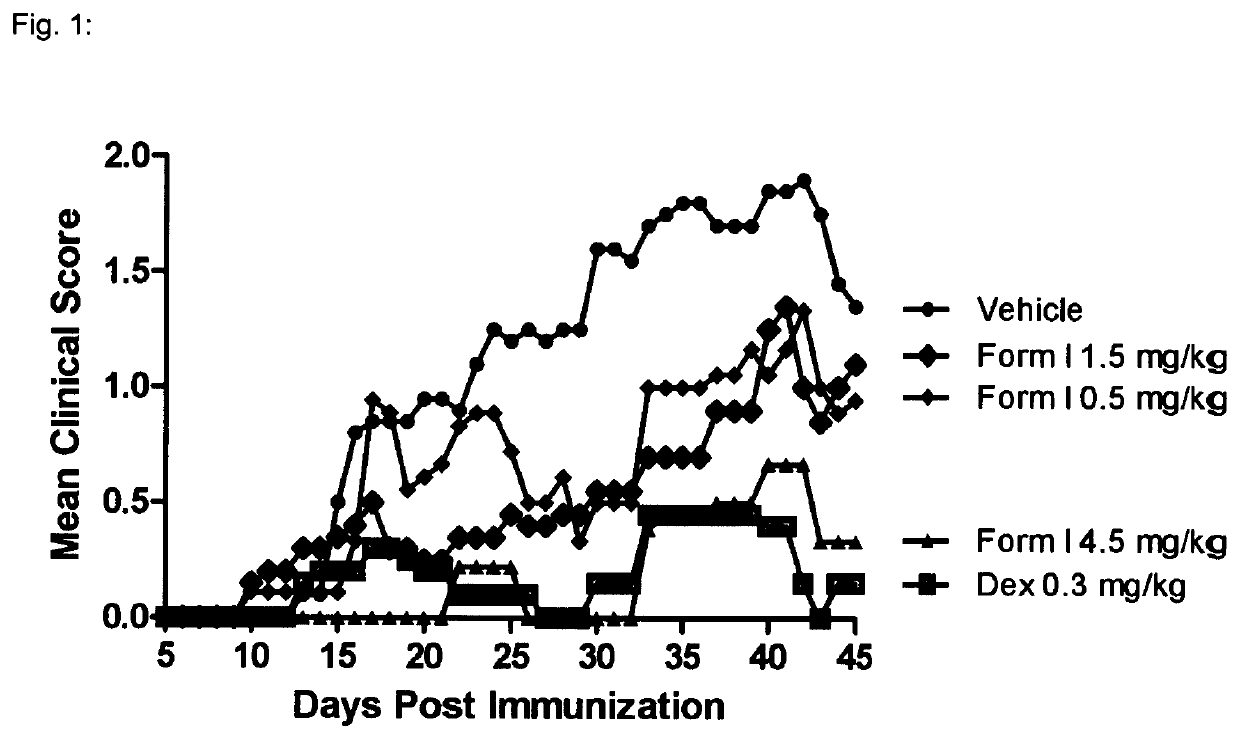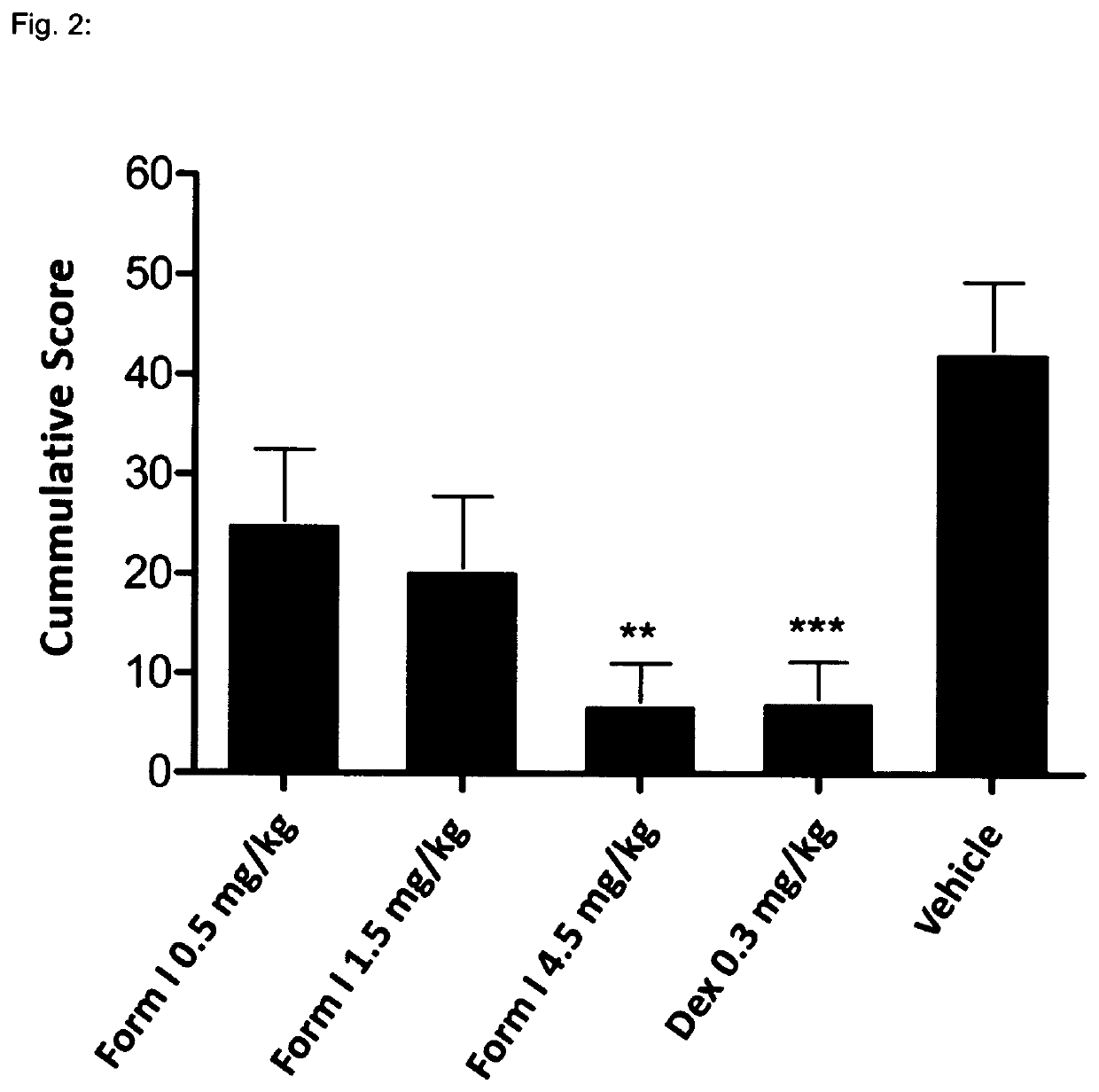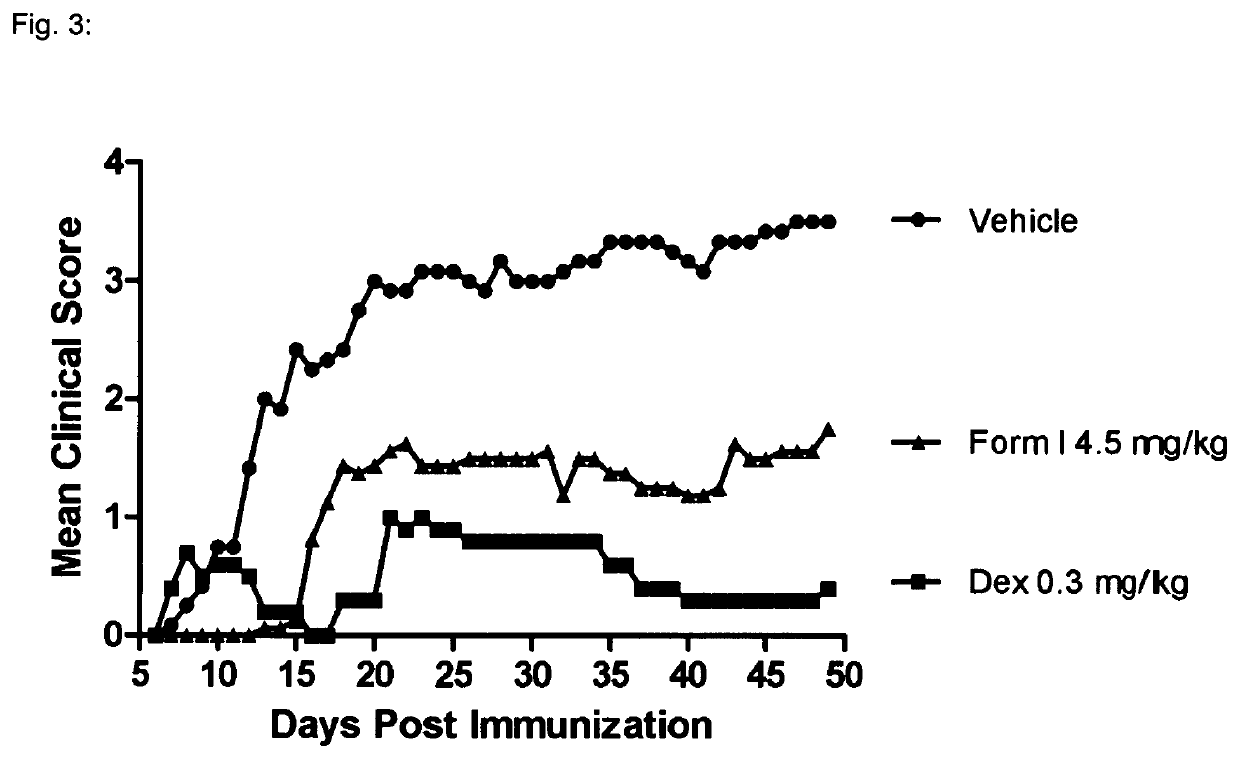Use of 5-amino-2,3-dihydro-1,4-phthalazinedione in the treatment of chronic progressive multiple sclerosis
a technology of chronic progressive multiple sclerosis and phthalazinedione, which is applied in the direction of medical preparations, pharmaceutical delivery mechanisms, nervous disorders, etc., can solve the problems of amplification of oxidative injury, increased energy deficiency, and oxidative damage of mitochondria, so as to improve patient compliance, high safety margin, and high toxic, teratogenic and carcinogenetic potential
- Summary
- Abstract
- Description
- Claims
- Application Information
AI Technical Summary
Benefits of technology
Problems solved by technology
Method used
Image
Examples
examples
[0137]1—MOG-Induced Experimental Autoimmune Encephalomyelitis in C57616 Mice
[0138]Background:
[0139]Experimental autoimmune encephalomyelitis (EAE) originally also referred to as experimental allergic encephalomyelitis is an animal model of immunoinflammatory disease of the CNS with clinical, histological and immunological characteristics comparable to human multiple sclerosis. EAE is thus an inflammatory disease of the CNS in rodents induced by injecting a protein which causes an immune reaction. This inducible demyelinating disease shows wide similarities with human multiple sclerosis with regard to clinical, histological and immunological characteristics. This model is broadly accepted to test the comparative efficacy of pharmaceutical agents. It shows a good predictive power for their efficacy in humans. There are several varieties of this model, depending on the mouse strain and the inflammation-stimulating protein. Some varieties are particularly predictive for specific MS dise...
PUM
| Property | Measurement | Unit |
|---|---|---|
| Time | aaaaa | aaaaa |
| Time | aaaaa | aaaaa |
| pKa | aaaaa | aaaaa |
Abstract
Description
Claims
Application Information
 Login to View More
Login to View More - R&D
- Intellectual Property
- Life Sciences
- Materials
- Tech Scout
- Unparalleled Data Quality
- Higher Quality Content
- 60% Fewer Hallucinations
Browse by: Latest US Patents, China's latest patents, Technical Efficacy Thesaurus, Application Domain, Technology Topic, Popular Technical Reports.
© 2025 PatSnap. All rights reserved.Legal|Privacy policy|Modern Slavery Act Transparency Statement|Sitemap|About US| Contact US: help@patsnap.com



